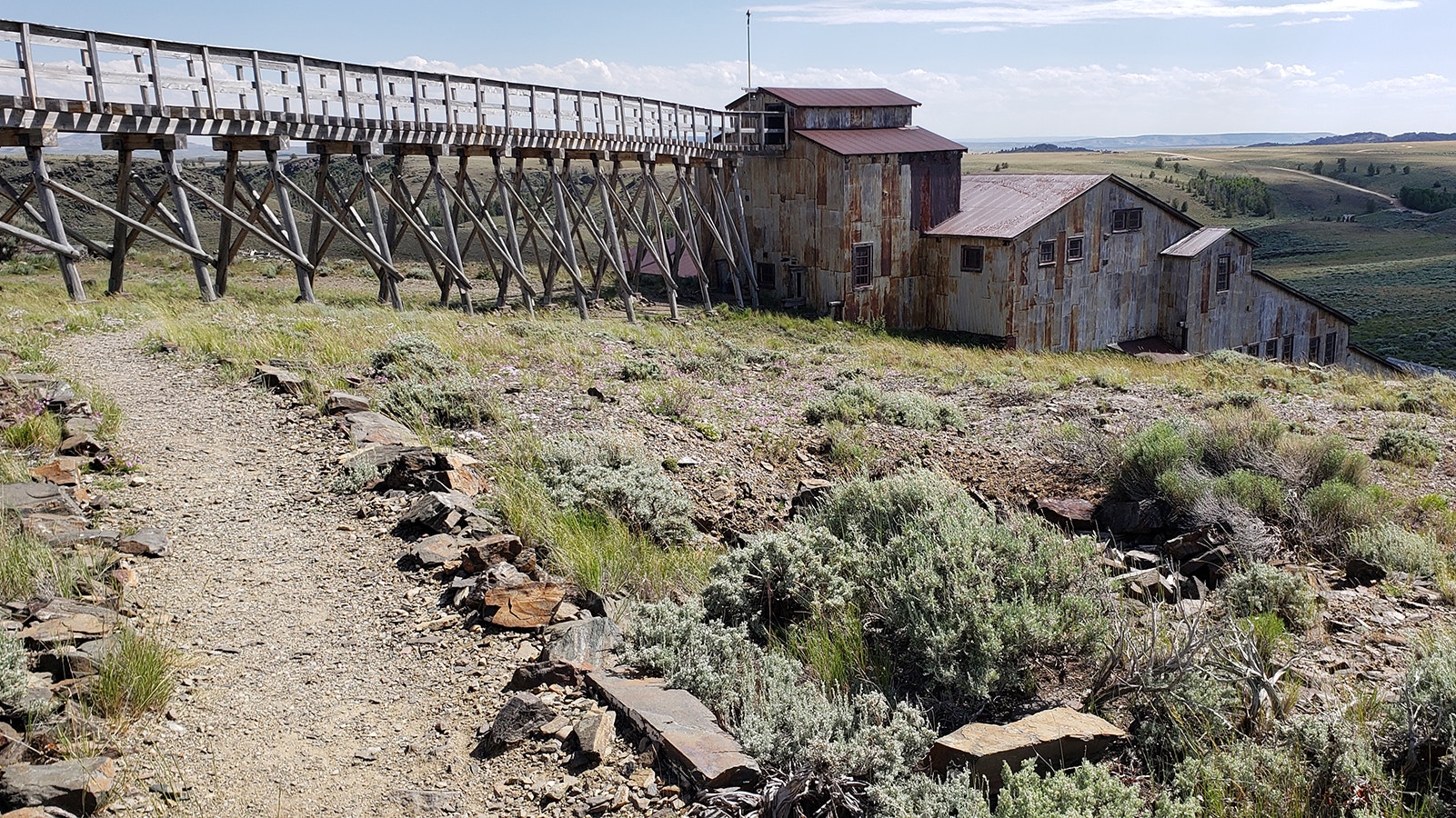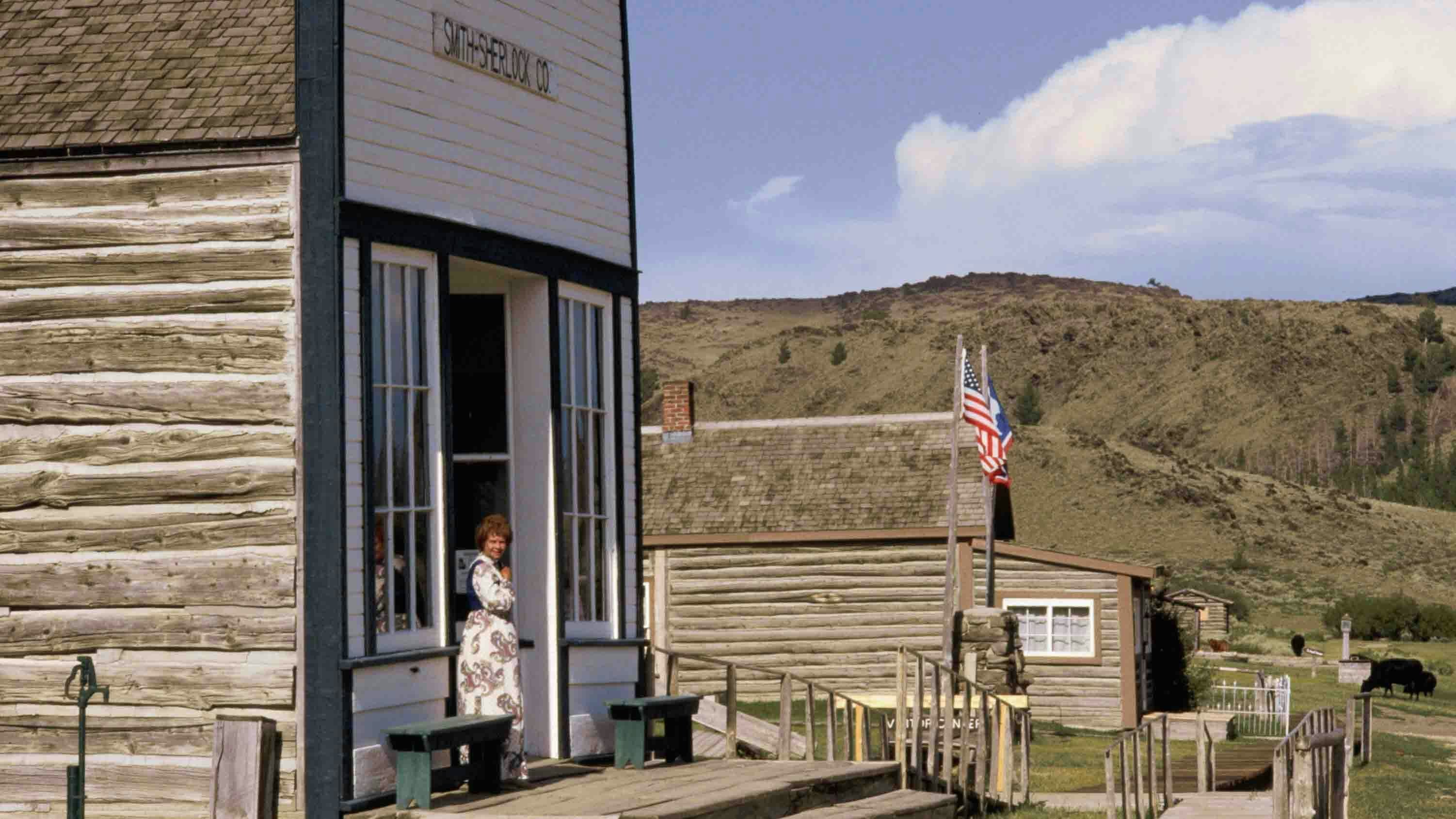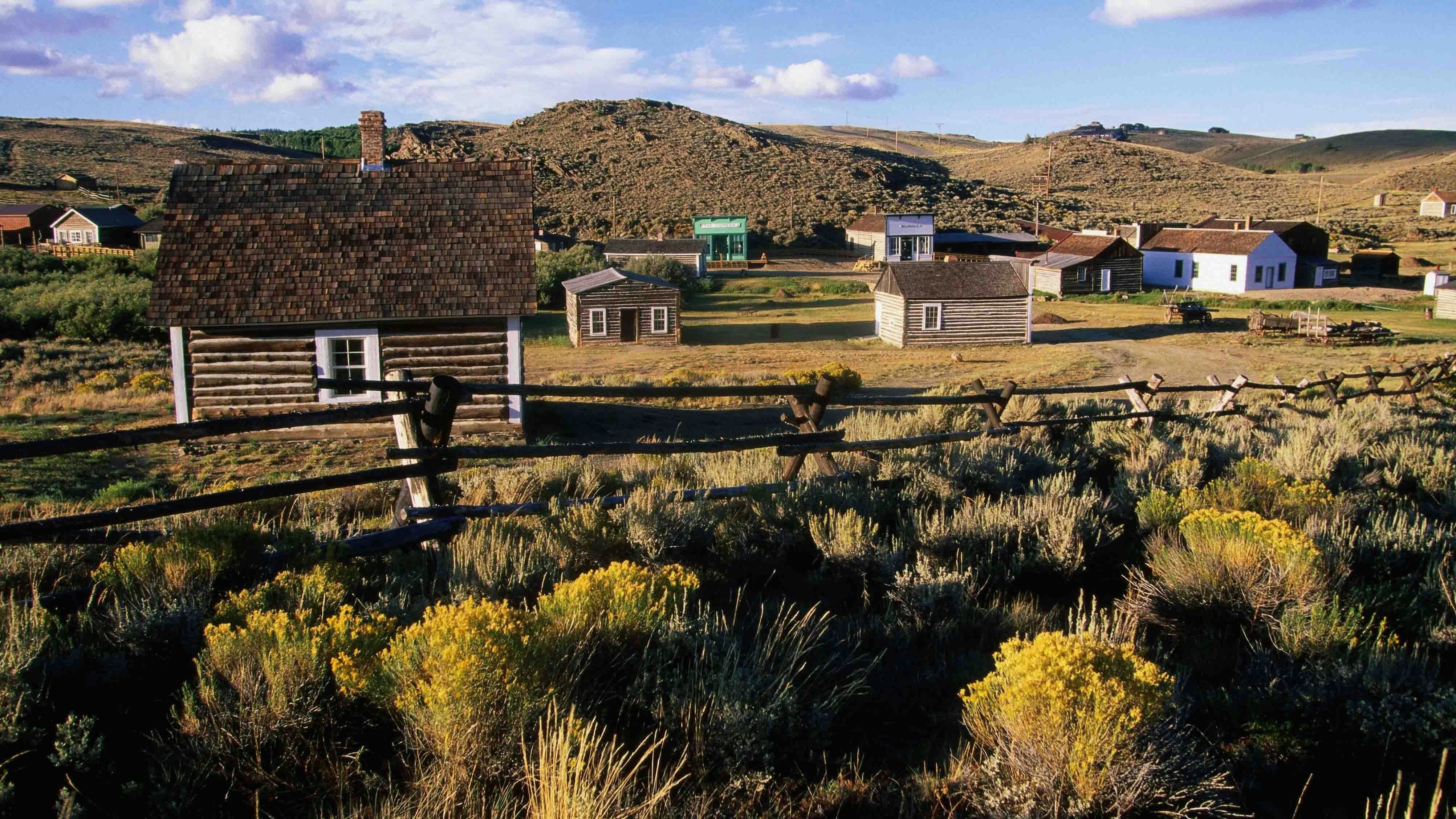In 1868, Indian raids were a thing to be feared in the gold rush town of South Pass City, Wyoming.
Miners would work their claims with a loaded rifle within reach and were always alert. John Johnson used this dangerous fact to his advantage to get his partner motivated to work.
The story of Johnson’s exploits was written by Peter Sherlock who was only a babe in his mother’s arms when he arrived at South Pass City in 1868. While other families and miners soon left for richer strikes, the Sherlock family remained to eke out a living.
Sherlock and his younger brothers grew up in the rugged countryside, exploring the gulches and streams and listening to the old timers tell their adventures when Wyoming was just a territory and danger could lurk over the next hillside.
After Sherlock was blinded in a dynamite accident just days before he was supposed to return to college in Nebraska, he remained in South Pass City working in his mother’s store.
He would often regale visitors to his hometown with these stories of the past and the adventures of the miners he knew personally.
In 1978, before these stories could be lost, his nephew, James L. Sherlock recorded the stories in “South Pass and Its Tales."
The Claim
Peter Sherlock wrote that in 1868, John Johnson and six other prospectors had organized a partnership to work some placer ground that they had located in Palmetto Gulch, about two miles east of South Pass City.
This claim, according to the January 23, 1899, edition of The Sweetwater Mines, appeared to be full of free gold that would assay well. To reach that gold, the partners had to work hard.
First, they built a three-mile ditch to bring water for sluicing to their claim. They set up their camp near a spring and were soon ready to begin washing gravel.
Their plan was to sluice for about a week and then to clean up and weigh the gold they had recovered. This gold would then be distributed equally among the partners with no deductions made for time lost due to sickness or to any other unavoidable cause.
Tummy Ache
Early one morning, a young miner complained of being sick. He was told by the other miners to remain in bed and rest up, and that he would feel better by the next morning.
The young man followed their advice but one day quickly turned into several. He would only get out of his bed when it was time to eat and would eat a big meal before rolling back up in his blankets.
Johnson and the others tolerated his behavior at first but soon began to suspect that the chief cause of the “sick” man’s indisposition was not illness, but aversion to the hard work of pick and shovel.
After yet another noonday meal with the ‘sick’ man eating well and then collapsing into bed, Johnson had had enough.
“Leave him to me. I will find out how sick he is,” Johnson said, according to Sherlock.
A Miner’s Cure
The miners returned to their claim and, after working for a short while, Johnson picked up his rifle, which he always kept handy, and started to crawl stealthily toward the camp.
Concealed by the growth of sage brush that covered the ground, he approached to within seventy-five yards of the tent of the sick miner.
He took careful aim over where he calculated the miner’s head would be and fired a shot over the prostrate form.
At the sound of the rifle shot, the sick man leapt from his bed in fear. Johnson watched as, clad only in his underwear and barefoot, the suddenly healthy miner bounded away over the rocks and through the brush. He raced down the gulch toward Willow Creek, a mile away.
Johnson fired another shot as the terrified fugitive disappeared down the gulch. Satisfied, he hiked back to the claim and told the other miners that the fellow made a good race for a sick man.
Meanwhile, the panic-stricken man raced madly down the gulch according to Sherlock.
He paid no heed to the rocks, snags and brush obstructing his way, until he reached Willow Creek, where turning up that stream, he continued his flight for another quarter of a mile, to where the Carissa stamp mill was in operation.
He was said to be a sorry spectacle, with his undergarments torn to tatters, his feet cut and bruised, and his legs scratched and covered with blood.
‘Bad Dream’
After he regained his breath and calmed down enough to talk, he relayed the horrible news that his camp in Palmetto Gulch had been attacked by Indians and that all his partners had been killed. He alone had escaped by flight.
After listening to his report, the men grabbed up their own rifles. They crossed the ridge and crept down into Palmetto Gulch where the placer ground was located.
There, instead of bodies, they found the placer miners calmly sluicing and searching for gold.
"It must have had a bad dream," Johnson and the partners said, according to Sherlock. “We have not seen any Indians."
Once he returned to camp, the sheepish miner now had some real injuries to nurse, but his cuts and bruises, while painful, were not serious. Within a week, he was able to return to the sluice box.
Johnson told Sherlock that the crack of the rifle was just the cure needed for the sick man. From that time on, the young man never shirked from his work and, until he left in the fall, earned his keep.
After the young left, future miners brought in a stamp mill to the Palmetto Gulch mining site along the Willow Creek to make their jobs much easier.
The stamp mill crushed the quartz, making it easier to extract the gold. This stamp mill was saved in 1976 and brought to South Pass City where it was restored, preserving the legacy of John Johnson and the other miners of South Pass City.
Jackie Dorothy can be reached at jackie@cowboystatedaily.com.














